Batik (/ˈbætɪk/ or /bəˈtiːk/; Javanese pronunciation: [ˈbateʔ]; Indonesian: [ˈbatɪk]) is a cloth that is traditionally made using a manual wax-resist dyeing technique. UNESCO designated Indonesian batik as a Masterpiece of Oral and Intangible Heritage of Humanity on October 2, 2009.
I had always wanted to learn how to make batik. The hot wax, the tracing of the lines, the coloring, the patience… I found the process both beautiful and calming; like a meditation practice. The opportunity to learn how to make batik came to me not in Yogyakarta or Solo, but in Ubud, Bali. Adit introduced me to Pak Nyoman and Ibu Rai, who own Nirvana—a small inn/gallery hidden in the midst of Ubud’s touristy Gautama Street.
Pak Nyoman is an Ubud-born painter who works with batik, oil paint, and water color. He had been an artist-in-residence at Bondi Pavilion, Sydney and Toorak College, Melbourne, lectured at John Kennedy Hall, Guam University, and exhibited extensively in Australia, Italy, Guam, Japan, Singapore and Switzerland. One morning, together with Adit and his cousin, Uma, I spent a day in Ubud to learn how to make batik.
The very first thing to do is to draw a pattern on the cloth with a pencil. Since it was my very first time, I decided to draw something simple and playful. I ended up drawing Susuwatari (wandering soot/ススワタリ)—that appears in Ghibli’s My Neighbor Totoro and Spirited Away; who got curious due to a sudden appearance of a lotus.
Once the drawing is finished, we continue to the second step: tracing the lines with hot wax. Dip the “canting” pen into the hot wax and make sure the canting isn’t too full, or else the wax will spill out. Before tracing the lines, blow the tip of the canting pen to make the wax flows easier. We need to concentrate during the tracing process and keep the canting pen at the right angle to ensure that the wax will continue to flow without spilling over.
Next, a more relaxing process: coloring! Don’t mix the paint with too much water if you’d like to have a vibrant color. Uma worked on a Balinese drawing with Balinese color that day—the kind you’d be seeing in cloths sold at some small shops along Kuta or Legian street stretch; while Adit worked on something more Japanese with the drawings of a fish in a pond.
Once the coloring is done and the paint is dry, we need to go back to the hot wax. The next step is to glaze the paint (colored areas) with hot wax. We don’t use canting pen for this. We use a brush instead. Dip the brush into the hot wax, and glaze, dip and glaze, dip and glaze. You need to ensure that the colored surface has been glazed perfectly. You can check this by turning the cloth over; the spots you miss will be visible. Pandjul—the son of Pak Nyoman and Ibu Rai helped me in checking the missed spots and glazing them; while Bocil, the family dog, was waiting for us to finish with sleepy eyes.
After the glazing, the next step is to color the whole cloth. You can pick the color that you like. The cloth will then be dipped into a color solution of your selection.
And then, it’s time to get rid of all the wax in your cloth. How? By dipping the cloth into a pan of boiling water, of course!
After that, you need to put your cloth to dry… and then you can see the results. Adit and Uma’s cloths turned out seriously stunning and beautiful! They are so talented!
And this one is mine. My batik cloth: Susuwatari Spotted A Lotus 😀
Would you like to learn how to make batik, too? If you’re in Ubud one day, come early in the morning to:
Nirvana Gallery
Jalan Gautama 10, Padangtegal Kaja, Ubud,
Gianyar, Bali, Indonesia. (80571)
Phone : +62.361.975415
E-mail : [email protected]
Website : www.nirvanaku.com
and please pet Bocil the dog for me!

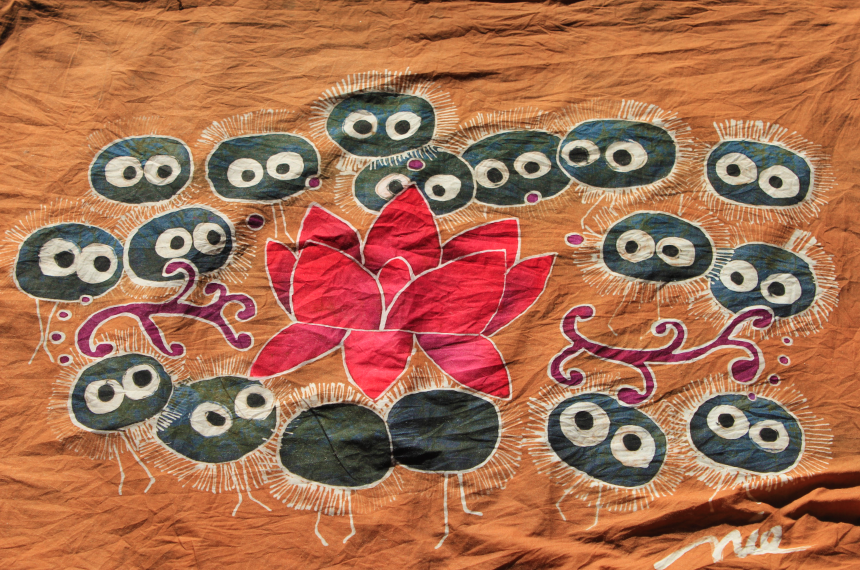
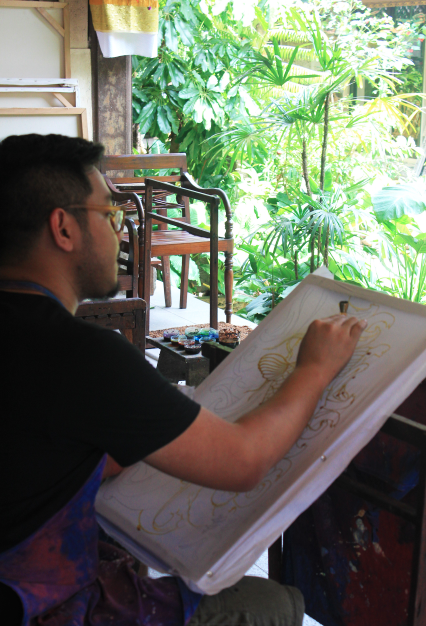
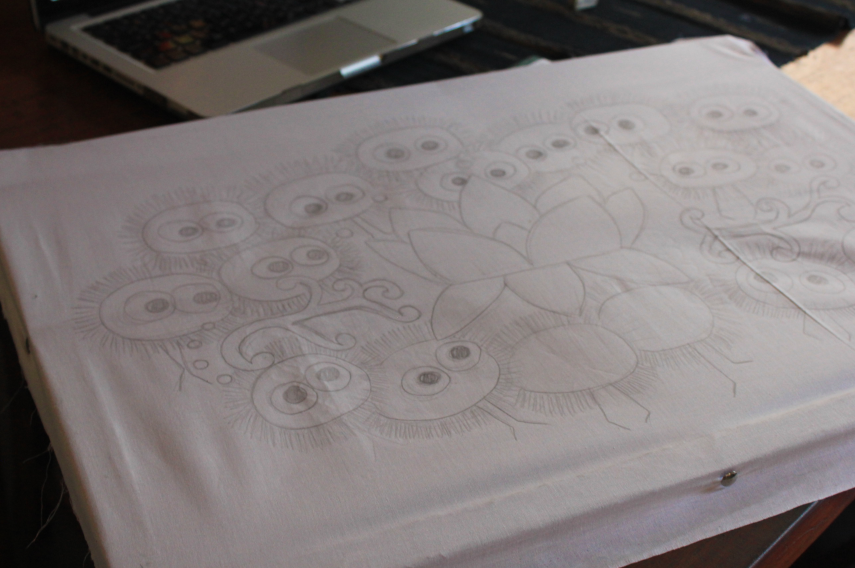


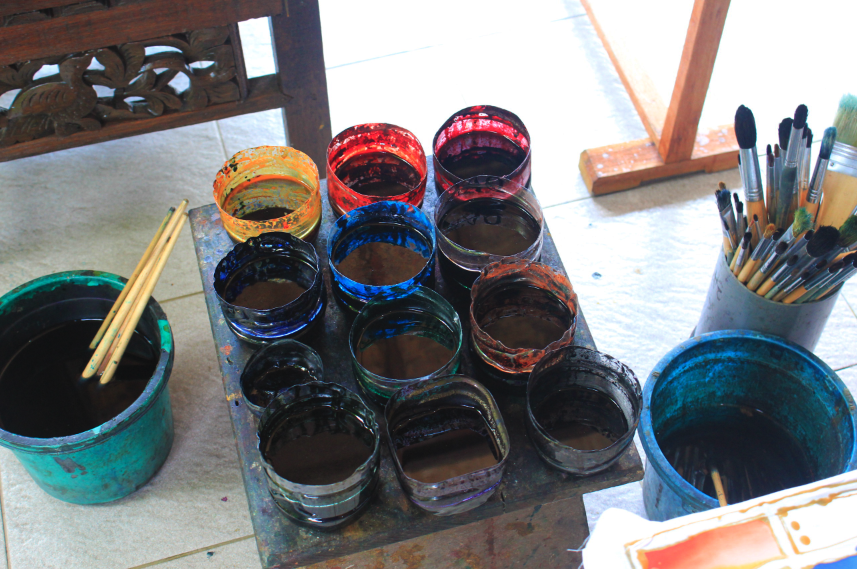
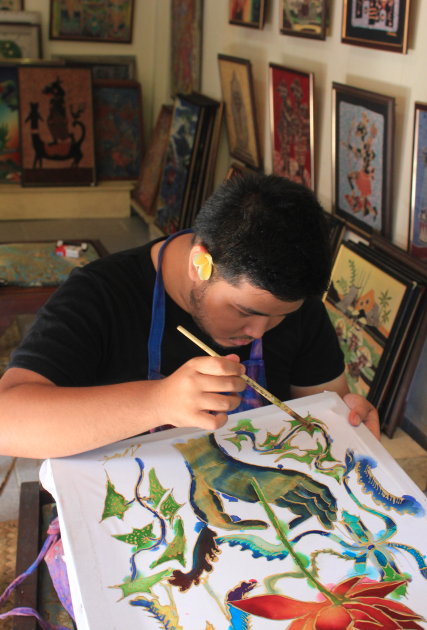
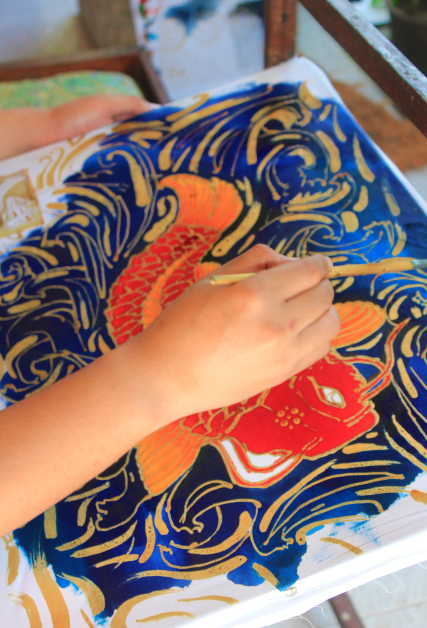
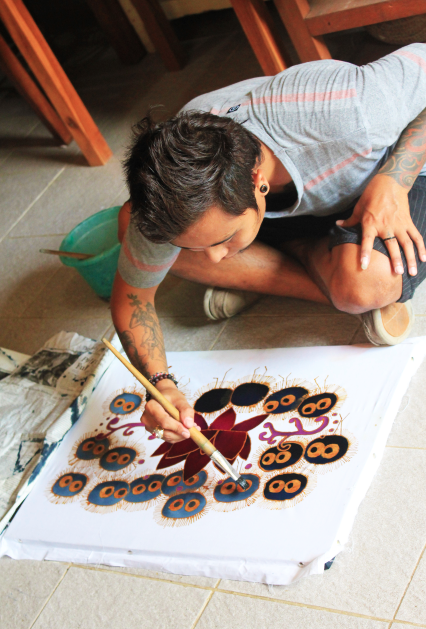
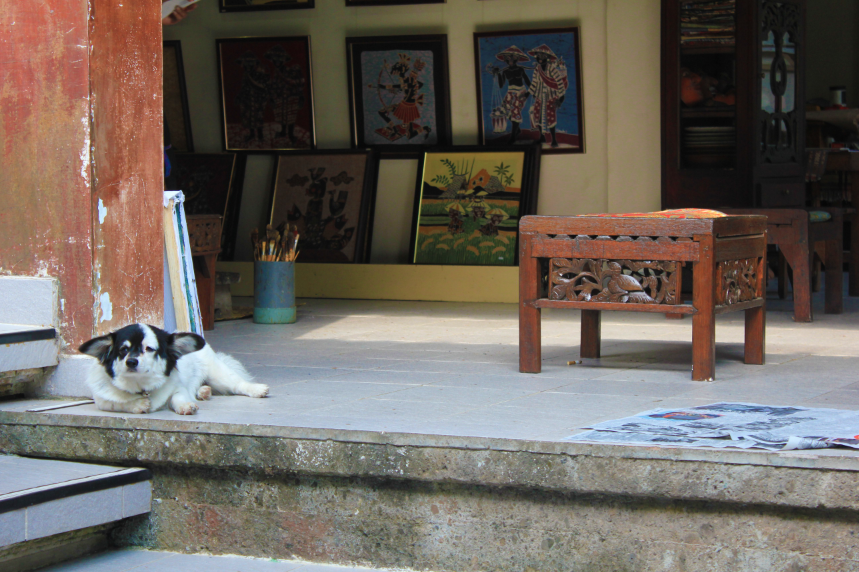
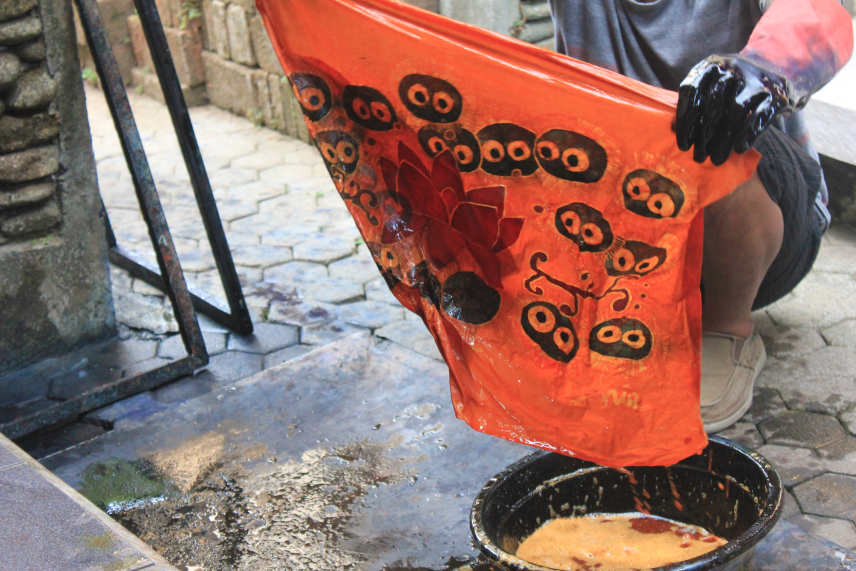
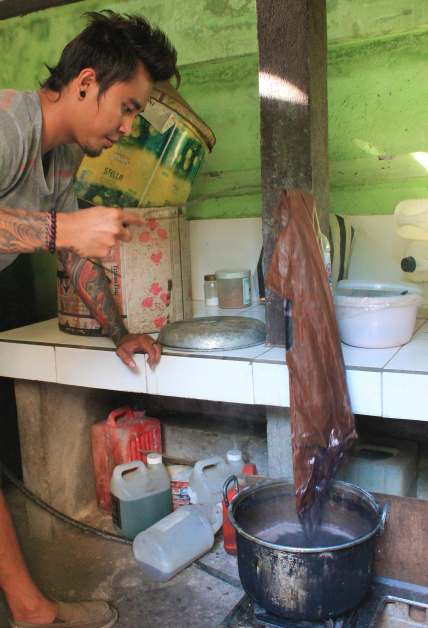
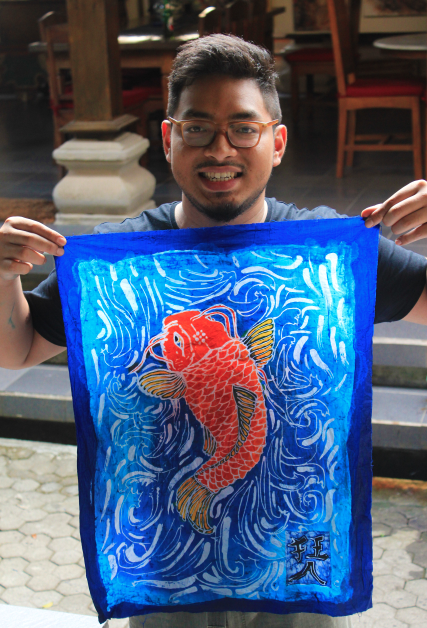




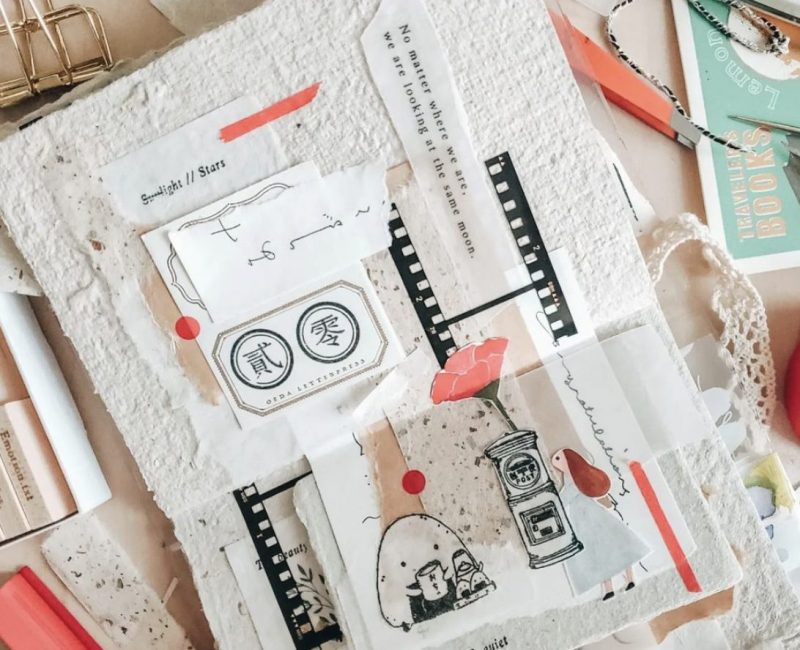

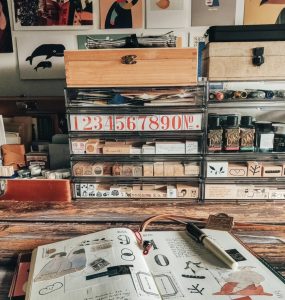

11 Responses
All my life I have adored anything made from batik cloth. To see real batik artists with such talent, and how the special pieces are made is really an honor. It must be amazing to create such beauty. Thank you for showing us your process!
Dear Cecile!
Wow, what a surprise! How did you come across batik cloth at the first place? I hope one day you could experience the making of batik cloth as well, I think you’ll love it–and seeing the results after going through such labour (and sweat :D) feels amazing. If it happens that you reach this part of the world, let me know, we’ll make batik together! 🙂
Hanny
loved your informative article…i love wearing batik…but had no clue how it was made…not any more 🙂
Really? Wow, where did you get your batik? 🙂 I’ll be in India next week; want to shop for some pretty cloth, too! Maybe sari 😛
really?? thats awesome! is calcutta on the itinerary? Though i AM know-all, i dont “know” much about other cities 😛 In Calcutta, its very popular and can be easily purchased in many shops…and yes, sari too 🙂 let me know, which places you are visiting…will find out details and let you know.
You guys are very talented!
And that Susuwatari reminds me of the minions in the Despicable Me! Haha … 😀
HAHAHAHAHAHAH :)) I love Agnes in Despicable Me :))
Hahaha … she’s adorable! Everybody loves her 😉
Your blog is great because it shows all of the steps in the process of Batik! I actually liked your piece the most, but you obviously learned from some very talented people. I’m in Ubud right now and trying to find a good place to learn about the process where it’s not invaded by too many tourists. Have you learned any other dye techniques; ikat, shibori? Anyway, I appreciate your informative blog.
Hi! I haven’t had the chance to look at other techniques, but would love to one day! 🙂 Hope you’ll be having a great time in Ubud–and try to pay a visit to Nirvana gallery. You can just look around or have a casual chat with Pak Nyoman about Balinese batik and paintings 🙂